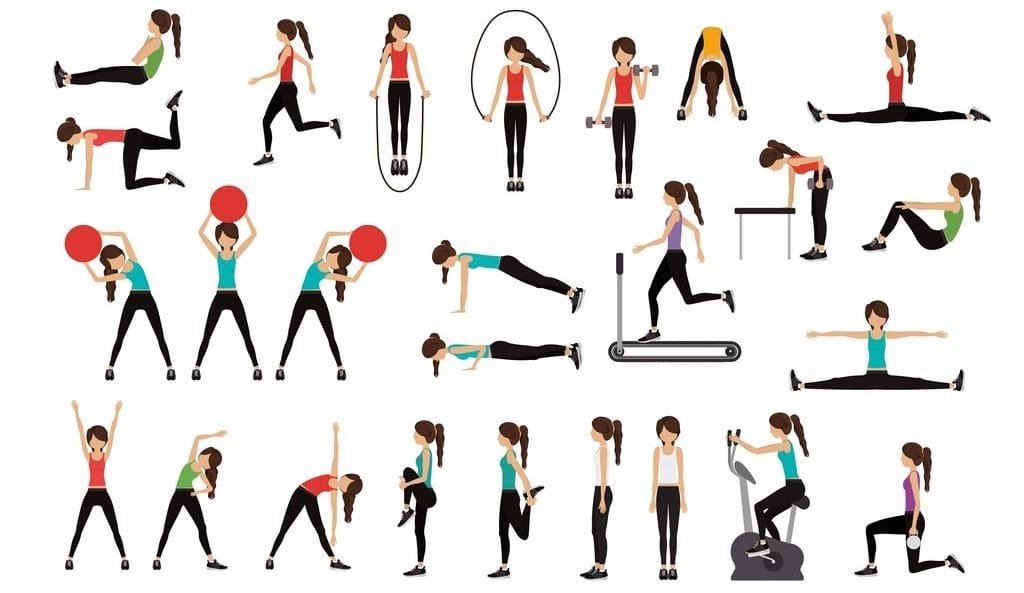When it comes to getting the maximum benefit out of your workout, range of motion is critical. Should you move the weight all the way from full contraction to full extension, or should you only move through a partial range of movement? You see a lot of pro bodybuilders on YouTube using a shortened range of motion, yet moving from full contraction to full extension seems to make more sense.
So, what gives? In this article we get to the bottom of the range of motion debate once and for all.
Dynamic vs Isometric Movement
At its most basic level, the range of motion debate compares dynamic with isometric exercise. Dynamic exercise involves moving a resistance through its range of motion, while isometrics is about resisting a force in a static position. In the latter case the muscle does not shorten or elongate.
Isometric exercise was heavily promoted in the 70s and 80s as a muscle building system. Exercise devices such as the Bullworker were extremely popular. However, there was just one problem – they didn’t build muscle. They were able to make a person stronger at a specific point of muscle contraction but not through its full range of motion. As a result, there is virtually no hypertrophy.
There is overwhelming evidence that dynamic exercise is far more productive than isometric exercise. When you do an exercise with joint movement, you end up developing the strength and size of a muscle through its entire range of motion. As an additional benefit, dynamic exercise will improve flexibility whereas isometric exercise will not.
Full or Partial Range of Motion
So, now that we have confirmed that we should be doing dynamic exercise, we need to decide whether full or partial movement is the most productive.
You don’t have to have been working out at the gym for very long to come across people who are using a ridiculously short range of motion. More often than not they have loaded up a weight that is far too heavy for them and are only moving the weight a few inches. You often see this sort of carry on on the leg press machine and under the squat rack.
Clearly, using a range of motion that is less than 40 percent of the complete range of motion of an exercise is foolish. Do not make the mistake of letting your ego take over so that you pile a crazy amount of weight onto the bar or machine and only moving a few inches – that is embarrassing!

The full range of motion of an exercise is the distance between the point of longest elongation and shortest contraction. It is clear that 100 percent range of motion is not essential for complete muscle development. The ideal range of motion for exercises can differ on the basis of the following:
- The resistance curve of the exercise
- The amount of weight being used
- Mechanical disadvantage
- Joint limitations
On certain exercises, the working muscle is put in a position of mechanical disadvantage at some point during its range of motion. A good example is the preacher barbell or dumbbell curl. In the bottom position, there is a massive amount of tension on the biceps tendon. Combine this with the fact that there is too much resistance at the start of the movement and you have a very good argument for cutting out the bottom 20 percent of the movement when doing the preacher curl. This will make it far less likely that you will suffer a biceps tear.
In contrast, you can ad should do the standing barbell curl with full range of motion. That’s because when the forearm is parallel to gravity, there is no load on the biceps.
Anatomical Principles that Affect Range of Motion
Our muscles are stronger when they are elongated than when they are contracted. From this it makes sense that the earlier portion of range of motion is more beneficial than the later portion. So, it makes sense if you are going to cut out part of the range of motion, to cut out the end portion.
There is more risk of injury at the extreme end of range of motion when you are using a heavy weight than at the beginning of the range of motion. Therefore, if you are going to be doing reps in the 4-6 range, you should not do the last 10-20 percent of the exercise. This should especially be the case when you are doing an exercise that involves mechanical disadvantage such as the preacher barbell curl or the leg extension.
This makes even more sense when we appreciate that the last 10 percent of an exercise promotes very little in the way of muscle growth.
So, if we can cut out the beginning and end of the movement, what does that leave us with?
We should perform the middle 80 percent of the range of motion.
However, during the first couple of sets, you should do full range of motion with a light weight. This serves to warm up the muscle group and provide for flexibility.
The Bottom Line
From what we have considered above, you should start performing your sets for an exercise with a relatively light weight. It should allow you to do between 20 and 30 repetitions. These reps should be performed slowly and through a full range of motion.
When you get into your working sets, you should abbreviate the starting and finishing portions of the rep. As the weight gets heavier, reduce the range of motion more, but no more than 10 percent at the start and 10 percent at the end of the range of motion. It is the middle 80 percent that is your sweet spot for maximum muscle growth.









Keep healthy life. Thanks for the great sharing.
Comments are closed.